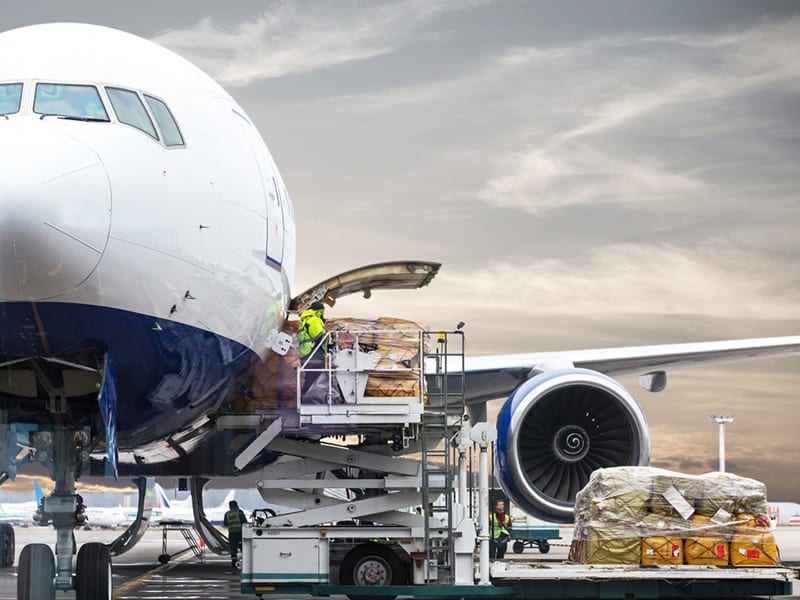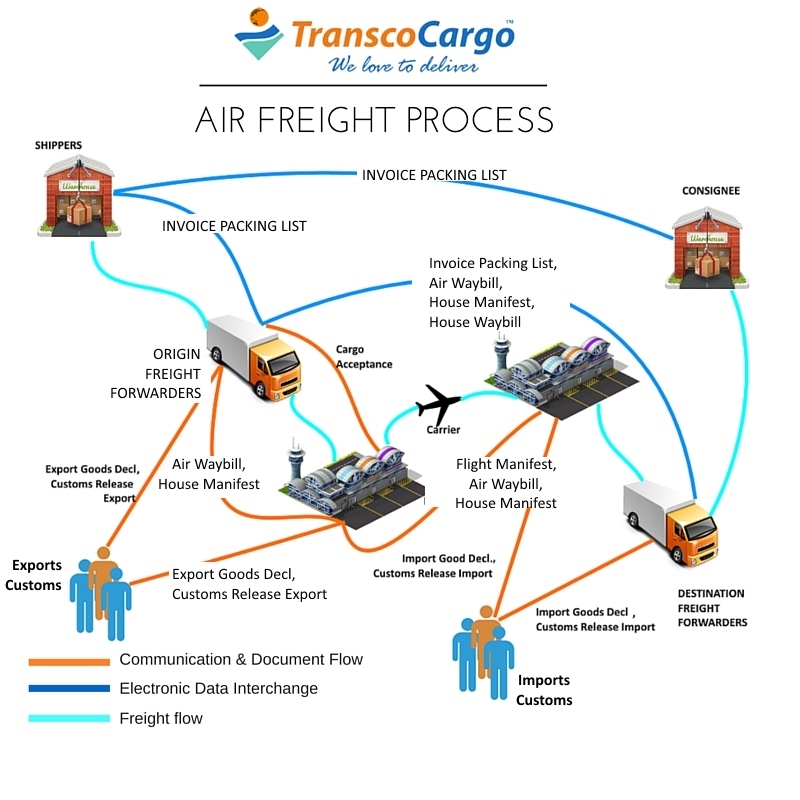Airfreight involves the shipment of packages and goods via an air carrier. An air carrier could be commercial or charter. Transportation via air carriers allows shipments an easier gateway to anywhere that airlines fly and land.
The process of airfreight is used in conjunction with other shipping methods such as rail, marine and has since become widely used as one of the most efficient delivery options in exporting and importing in the 21st century. The airfreight industry has grown steadily over the past decades and considered an efficient and quicker way of transporting goods.
The process of air cargo requires many vital steps taken by the freight forwarder and the air carrier. Here is a guideline on how the process of air cargo is carried out on a daily basis.
Shipping
There are 3 vital steps that are followed under the process of shipping.
1. Assembling the Shipment
Collecting goods for consignee and preparing the packing materials and the packing list is important. Once the shipment is assembled we move onto the next step.
2. Making RFT (Read for Transport)
It is also important to ensure you pack your goods and label packages clearly. Following the packaging, your freight forwarding agent will prepare any required security documents and other relevant transportation documentation and prepare for shipment. Transco Cargo can help you any step of the way.
3. Ordering Transport
Once the package has arrived, it will be sent to the freight forwarder warehouse and left at storage ready for pick up.
Forwarding Out
When your goods are being exported, the below steps apply during transportation.
- Goods are picked up following the order received and given a POA (Proof of Acceptance)
- An incoming check is performed and sorted according to flight dates for goods to be transported
- Recheck for labelling errors and re-label if required and make necessary security declarations
- Prepare all relevant customs documents and clear for customs
- Consolidate all goods according to all regulations of necessity and prepare a master AWB (Air Waybill)
- Arrange transport to airline and inform receiving end of the incoming package
Air Transport
During air transportation, there are many vital steps that are carried out during the transference of the package.
- Prepare and plan for handling and storage shipments based on confirmed bookings.
- Perform incoming and administration checks
- Sort good and documents
- Perform outgoing and administration checks
- Prepare ULDs (Unit Load Devices) according to specific instructions
- Prepare ramp transport and security checks
- Load onto aircraft and prepare for flight
- Once landed prepare for ramp transport of cargo
- Receive ULDs and breakdown ULD according to instructions
- Check incoming shipments against documents
- Prepare for warehouse storage and clear flight manifest
- Load goods onto truck and dispatch
Forwarding In
Importing goods via air transportation is considered a convenient method to transfer packages. Here are the steps taken to ensure goods are delivered on time;
- Picking up documents once notified by the airline and arranging local pickup of the documents
- Preparing customs documents, aiding with clearance and printing the customs release note
- Arrange local pick up of the package from the airline
- Arrange delivery to consignee with all relevant documentation and receive POD (Proof of Delivery)
Consignment
- Receiving shipment – once the shipment is received the check for all number of goods and if any visible damage can be identified. Once cleared, provide a POD.
- Unpacking goods– unpack goods and thoroughly check for any damages that have occurred during transportation.
- Check goods with administration – count present goods with the packing list or procurement order to verify any missing items. Arrange for any warranty claims along with payments for transport supplier where necessary. Make arrangements for customs declarations when required.


